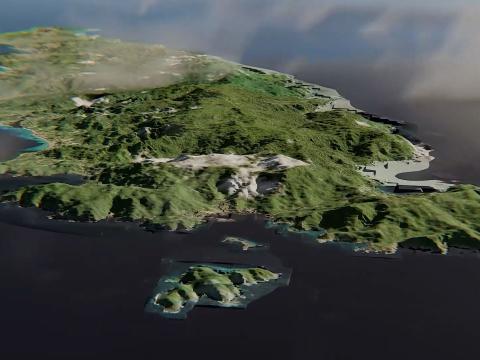NASA Gets its ICON Satellite Ready for Launch
With a growing reliance on the global positioning system (GPS), satellites and other space-based technologies for use in everyday life on Earth, the importance of understanding the region of space where these technologies operate has also grown.
Changes in space weather, such as charged-particle storms in the ionosphere, can distort satellite or GPS signals, affecting communications on many levels. This not only has implications for the military, but also for society, as self-driving cars will rely on GPS-based navigation as will modern agriculture technologies. In order to examine how the weather in space affects these technologies, scientists are looking at the connection of weather on Earth to the ionosphere.
To do that, the National Aeronautics and Space Administration (NASA) is launching the Ionospheric Connection Explorer satellite, known as ICON, from the Kwajalein Atoll in the Marshall Islands on June 14 (continental U.S. time). ICON will study “the frontier of space,” the layer of charged particles from about 50 to 360 miles above Earth’s surface, according to the agency. The satellite will scan the earth every 90 minutes, providing data on the area where terrestrial weather meets space weather. By studying the so-called airglow around earth—the glowing light around the atmosphere—NASA scientists will be able to examine the weather impacts.
Earth’s atmosphere is having a much bigger impact on the ionosphere, and that is why ICON is studying this region, explained Douglas Rowland, an astrophysicist at the Heliophysics Division, NASA Goddard Space Flight Center, during a June 4 media event.
“This area at times can be filled with such beauty as the aurora and at other times experience increases in radiation that can interfere with radio communications, satellites and even astronauts,” according to an agency statement. “ICON will help determine the physical process at play in this space environment and pave the way for mitigating their effects on our technology, communications systems and society.”
As it orbits the low latitude above the Earth’s equator, over the tropics and rain forest areas, ICON will take images across the spectrum to give NASA a better picture of the ionosphere. It will provide data for scientists to study the phenomenon of earth weather influencing the ionosphere. In addition, NASA is hoping that the resulting data will provide better predictions for space weather, said Tom Immel, lead scientist, Space Sciences Laboratory Berkeley.
ICON, together with NASA’s Global-scale Observations of the Limb and Disk (GOLD) mission, will offer “the most comprehensive” look ever of the ionosphere, added Willis Jenkins, ICON program executive at NASA.
Orbital Atk Inc. designed, built and tested ICON. With its integration onto Orbital Atk’s Pegasus XL rocket, ICON will be carried and launched by the company’s L-1011 aircraft, known as Stargazer.




Comment
There are different kinds of
There are different kinds of chem trails, as you probably know, The question is not if chemicals are in the aerial deliveries but what chemicals are being delivered and why and what impact they’re having on present time health and genetics of future generations.
Comments